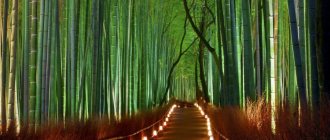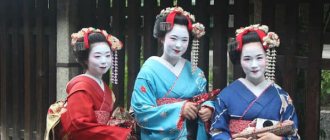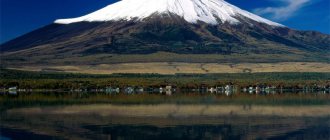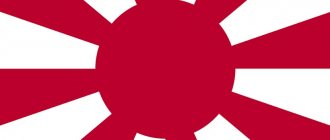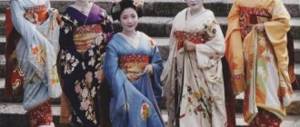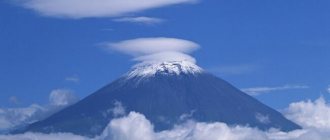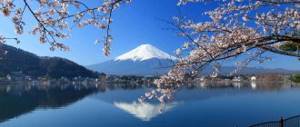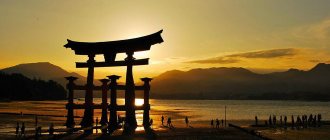Showa (1926–1989)
Major events of the Showa era:
In the second half of the 1930s, in the context of increasing aggressive militaristic sentiments in the government and society, there was a significant change in the state apparatus of Japan.
On July 7, 1937, the Sino-Japanese War began, which resulted in numerous casualties among the Chinese civilian population and actually lasted until 1945.
In 1940, Japan signed the Tripartite Pact with Germany and Italy, which provided for the delimitation of spheres of influence between the Axis countries in Europe and Asia, the establishment of a new world order and mutual military assistance. That same year, all Japanese political parties were dissolved, and the Throne Assistance Association came to the fore.
On December 7, 1941, Japan attacked the American naval base at Pearl Harbor.
The next day, December 8, 13 countries declared war on Japan. Japan's allies, Germany and Italy, in turn declared war on the United States. On the same day, the Japanese blockaded the British military base in Hong Kong and launched an invasion of Thailand, British Malaya and the Philippines. Thailand, after a short resistance, agreed to a military alliance with Japan and declared war on the United States and Great Britain.
On April 18, 1942, American bombers from aircraft carriers carried out their first “retaliation raid” on the very heart of Japan - Tokyo, which caused shock among the Japanese. The Japanese believed that the planes were sent from the island of Guadalcanal (Solomon Islands), and developed an operation to launch a counterattack on American military formations in the area.
In 1942–43, several battles took place near Guadalcanal that turned out to be turning points in the war and provided a significant strategic advantage to the Americans.
On August 6, 1945, American aircraft dropped an atomic bomb on the city of Hiroshima.
On August 8, the USSR declared war on Japan.
On August 9, American aircraft dropped a second atomic bomb on the city of Nagasaki. Thus, the United States practically wiped out two Japanese cities from the face of the planet.
The American government decided to drop atomic bombs on Japan to hasten the end of World War II and also to show its power to the Soviet Union. On August 15, Japan surrendered after suffering horrific losses of life and material. The history of the atomic bombing of the cities of Hiroshima and Nagasaki is the only case of the use of nuclear weapons in world history.
On September 2, the act of surrender of Japan was signed in Tokyo Bay on board the American battleship Missouri. From that moment on, the occupation of the country by allied (namely American) troops began, which lasted until April 28, 1952. It ended only after the signing of the San Francisco Peace Treaty (September 8, 1951).
In 1968, the United States returned the Ogasawara Islands to Japan, and in 1972, Okinawa.
From the mid-1950s until the first "oil shock" in 1973, the Japanese economy experienced a period of record growth, which in the West is known as the "Japanese Economic Miracle" (in the Japanese version - a period of high economic growth). This allowed Japan in the shortest possible time not only to fully recover after defeat in the war, but also to take second place in economic power, consistently surpassing France, Italy, Canada, Great Britain, Germany, the USSR and second only to the United States. Japan has been ranked as the second economy in the world since 1968, giving way to China only in 2010.
On January 7, 1989, Emperor Showa died. On January 8, Emperor Akihito (b. 1933) ascended the throne, and the Heisei era began (1989).
Art of the Showa era
The Showa period gave the world many writers who made significant contributions to the history of world literature. Among the most famous of them are Edogawa Rampo (1894–1965), a world-renowned master detective; Mishima Yukio (1925–1970), a successor to the traditions of Japanese aestheticism, who became famous not only as a writer, but also as a playwright, athlete and actor; Abe Kobo (1924–1993), medically trained writer, screenwriter, photographer and inventor; Kawabata Yasunari (1899–1972), who celebrated the beauty of traditional Japan; Oe Kenzaburo (b. 1935), modern humanist writer fighting against war and violence in all its forms.
In the history of post-war painting, some of the most famous artists were Okumura Togyu (1889–1990), famous for his depiction of one hundred views of Mount Fuji, and Higashiyama Kayi (1908–1999), who became famous in particular for creating and restored wall paintings of many Japanese palaces and temples (Imperial Palace, Toshodaiji Temple, etc.). In Western-style painting, the most famous artist is Hayashi Takeshi (1896–1975), in whose works one can trace the strong influence of Cézanne, Picasso, and Modigliani.
Showa era kimono
So, 20th century. Japan and the West. This time, not only the West rediscovered Japan, but Japan, no longer able to keep the country closed to foreign influence, opened up, opened up completely, almost renouncing everything - traditions, national clothing, beauty standards. But... Almost a century has passed since then - and the West is still fascinated by Japan, its clothes, its fabrics. As for Japan, while accepting foreign influences, it managed to preserve its deep roots.
But for now we will look only at kimonos from the Showa era (1926-1989), when cross-cultural exchange between Japan and the West was already in full swing. By the beginning of the Showa period, bright and dynamic designs appeared on kimonos, inspired by art movements such as art deco, surrealism and abstract expressionism.
The patterns feature the vibrant colors of Fauvism and the bold geometric patterns of Art Deco. But this is not just borrowing, it is an attempt to assimilate Western ways of creating art, Western understanding of beauty, in order to correspond to a distinctly Japanese form. The resulting clothes are both artifacts of their time and surprisingly modern pieces. What’s surprising is that, trying to adopt Western art, Japanese artists turn to the youngest, most relevant in it, choosing the most “living” - in terms of “energetic”, “noticeable”, “demanding attention”. The resulting kimonos look unusual, but not repulsive. They are incredibly modern (a hundred years later!) and incredibly cheerful and optimistic! According to etymology, the word “kimono” means “clothing for life” - so such clothes can only be for life.
Kimono with curved vertical lines Japan (c 1950), stenciled design, Meissen silk. Collection of the Costume Council Fund Museum
Light kimono without lining (c. 1940), stenciled patterns, Meissen silk.
Kimono with a mountain landscape (c. 1950), stenciled design, Meissen silk.
Women's kimono with a mountain landscape is very different from the traditional landscape that is often depicted on Japanese clothing. Instead of graceful structures, fine lines and a touch of nostalgia for a floating world, this is a brightly colored landscape, blazing colors and an aesthetic inspired by 20th-century Western artistic movements such as Fauvism, a style that favored bright, bold colors over naturalistic hues.
Geometric Pattern kimono (c. 1940), silk crepe, stenciled design.
The star-shaped geometric pattern on the women's abstract kimono is reminiscent of the traditional abstract hemp leaf pattern (asa no ha) often found on clothing as an auspicious symbol (signifying energy and stability). But bright primary colors and strong black lines modernize the traditional pattern, transforming it into a dramatic geometric composition with a three-dimensional effect. Please note that this pattern fully conveys energy and stability, despite such a transformation.
At the same time, the star-shaped pattern on the kimono is reminiscent of the red rays of the sun depicted on the “rising sun flags,” which symbolized good luck during the Edo period (1615-1868). This motif was adopted as the national flag of Japan in 1870
Unlined kimono (hitoe) with waves and dots (c. 1935), silk crepe with viscose and metallized threads, stenciled design.
Wave crests with dots representing sea foam appeared in 17th and 18th century Japanese painting, woodblock prints, textiles, and decorative arts. This graphic version belongs equally to the art of Japanese engraving and to European art of the late 19th and early 20th centuries, fascinated by Japan.
Kimono with large dots (c. 1935), silk, stenciled design.
Kimono with diagonal and vertical stripes (c. 1950), silk, silk, stenciled design.
Kimono with abstract ornament (c. 1950), silk, stenciled ornament.
Pine in Japanese painting
Heian period (794–1185)
Like many other Japanese themes, motifs and subjects of painting, the theme of pine trees was borrowed from the Chinese tradition.
And one of the earliest examples of painting depicting pine trees preserved in Japan are the works of Chinese artists - decorative paintings of screens in the kara-e style from the collection of the Shoso-in subtemple (正倉院) in the Todai-ji Monastery (東大寺) in Nara (paintings from depiction of women under trees). Screen from Shoso-in Temple
Screen from Shoso-in Temple 8th century
Pine trees were a favorite motif in Yamato-e (やまと絵) painting of the Heian period. Yamato-e artists were characterized by stylized depictions of pine trees, as well as other elements of the landscape as a whole. The earliest surviving landscape painting from this period is Sansui Byobu (山水屏風) from the collection of the Kyoto National Museum, formerly owned by Kyoto Toji Temple (東寺). The multi-leaf screen depicts the popular poet of the Chinese Tang Dynasty in his favorite mountain retreat. The landscape consists of low, rolling hills and wide expanses of water, which are reminiscent of landscapes from the Kyoto area.
Scenery
Painting the screen (byobu) “Landscape”. Late Heian period
Historical documents indicate that “famous scene paintings” (名所絵, meisho-e) from the Heian period sometimes depicted a seashore with pine trees (see Sandy Shore and Pines, Hamamatsu-zu, 浜松図), e.g. coast of Suminoe (住之江, Osaka), Ise (伊勢, Mie Prefecture) or Settsu (摂津, Hyogo Prefecture). It seems likely that there was little variation in the coastal landscapes depicted in these Heian paintings of famous views because none of them were painted from life.
Kamakura period (1185–1333)
Fragment of the scroll “Legends of Jinyo-ji Temple”
"Legends of Jinyo-ji Temple." (fragment)
The above painting is from the final part of two fourteenth-century handwritten scrolls (emakimono) telling the legends of Jinyo-ji Temple. According to legend, the Japanese mountain hermit En no Gyoja went to Korea to ask the deity Hosho Gongen to come to Japan to protect the future site of Jinyo-ji. Hosho Gongen agreed, and the temple was founded in 684. Jinyo-ji, located in the town of Kishiwada (modern Osaka Prefecture), is now a small temple belonging to the Tendai school of Japanese Buddhism. The scene from the scroll depicts pilgrims purifying themselves in the river before entering the temple. On the riverbank, under two trees tied together with a sacred shimenawa rope, a Shinto priest uses a gohei (a ritual wooden staff with paper strips) to purify a Buddhist monk.
Muromachi period (1336-1573)
Pine Grove
Tosa Mitsunobu (1434-1525). "Pine Grove"
Sandy beach and pine trees
Unknown author. "Sandy shore and pine trees" late 15th century
In the works of artists working in the Kara-e or Kanga style, images of pine trees were more naturalistic and often followed the style of Ma Yuan and Xia Gui and the Southern Chinese school of painting.
Landscape in the style of Xia Gui
Shubun Tensho. "Landscape in the style of Xia Gui"
Four seasons Sesshu. "Four Seasons: Autumn, Winter"
Four seasons Sesshu. "Four Seasons: Autumn, Winter"
Long Scroll of Landscapes
Sesshu Toyo. “Long Scroll of Landscapes” (fragment)
Long Scroll of Landscapes
Sesshu Toyo. “Long Scroll of Landscapes” (fragment)
Landscapes with pine trees
Kano Motonobu. Landscapes with pine trees Japan, Muromachi period
Azuchi-Momoyama period (1573–1603)
During the Azuchi-Momoyama period, Hasegawa Tohaku's famous "Pine Forest" screens were created, which are now in the collection of the Tokyo National Museum and are classified as National Treasures of Japan.
Pine forest
Hasegawa Tohaku. "Pine Forest". Azuchi-Momoyama period Tokyo National Museum
Edo period (1603-1868)
Flowers and birds of the four seasons
Tosa School. “Flowers and Birds of the Four Seasons” Pair of six-leaf screens. Japan, Edo period, 17th century
Pines of four seasons Kano Tanyu. “Pines of the Four Seasons”, Yamato-e style Japan, Edo period
A learned man contemplating a lake
Kano Tanyu. "Scholar Contemplating the Lake", Kanga style Japan, Edo period
Bird on a pine tree
Unknown author. "Bird on a Pine"
Three friends of winter and birds
Unknown author. "Three Friends of Winter and Birds"
Pine on the shore
Unknown author. "Pine on the Shore"
Wild geese and snowy pine trees
Ogata Korin. "Wild Geese and Snowy Pines"
Pine, flowers and herbs of four seasons
Ogata Korin. "Pine, flowers and herbs of four seasons"
Snow-covered pine branch
Ogata Kenzan (1663-1743). "Snow-covered pine branch"
Particularly noteworthy are the “golden” screens of Maruyama Okyo “Snow-Capped Pines”, which in our time are classified as National Treasures of Japan. It is believed that Okyo was one of the first Japanese artists to move away from the depth and symbolism of Eastern painting towards the naturalism of Western painting.
Snowy pines
Maruyama Okyo. "Snowy Pines"
Meiji period (1868-1912)
Two pines
Suzuki Sonen (1848-1918). "Two Pines"
Hozu River
Takeuchi Seiho (1864-1942). "Hozu River" 1888
Pines
Uenaka Chokusai (1885-1977). "Pines". 1910
Snowy pines
Yamamoto Shunkyo (1872-1933). "Snowy Pines" 1908Spirit of hawks on snowy pines
Yamamoto Shunkyo (1872-1933). "The Spirit of the Hawks in the Snowy Pines." 1912
Spring in the mountains | Pines under the snow Yamamoto Shunkyo (1872-1933). “Spring in the Mountains” (left) by Yamamoto Shunkyo (1872-1933). “Pines under the snow” (right)
Taisho period (1912-1926)
Pine tree and the rising sun
Hiroshi Yoshida (1876-1950). "Pine and the Rising Sun"
Showa period (1926-1989)
Pines and poetry
Fukuda Kodojin (1865 - 1944). "Pines and Poetry." 1932
Moon and pine | Cliffs and pine | Sun and Pine Fukuda Kodojin (1865 - 1944) “Moon and Pine” (left) “Cliffs, Pine and Rising Sun” (in (right)
Match years[ | ]
| December 25, 1926 - January 7, 1989 |
| Year of Showa | 1 | 2 | 3 | 4 | 5 | 6 | 7 | 8 | 9 | 10 |
| Gregorian calendar | 1926 | 1927 | 1928 | 1929 | 1930 | 1931 | 1932 | 1933 | 1934 | 1935 |
| Year of Showa | 11 | 12 | 13 | 14 | 15 | 16 | 17 | 18 | 19 | 20 |
| Gregorian calendar | 1936 | 1937 | 1938 | 1939 | 1940 | 1941 | 1942 | 1943 | 1944 | 1945 |
| Year of Showa | 21 | 22 | 23 | 24 | 25 | 26 | 27 | 28 | 29 | 30 |
| Gregorian calendar | 1946 | 1947 | 1948 | 1949 | 1950 | 1951 | 1952 | 1953 | 1954 | 1955 |
| Year of Showa | 31 | 32 | 33 | 34 | 35 | 36 | 37 | 38 | 39 | 40 |
| Gregorian calendar | 1956 | 1957 | 1958 | 1959 | 1960 | 1961 | 1962 | 1963 | 1964 | 1965 |
| Year of Showa | 41 | 42 | 43 | 44 | 45 | 46 | 47 | 48 | 49 | 50 |
| Gregorian calendar | 1966 | 1967 | 1968 | 1969 | 1970 | 1971 | 1972 | 1973 | 1974 | 1975 |
| Year of Showa | 51 | 52 | 53 | 54 | 55 | 56 | 57 | 58 | 59 | 60 |
| Gregorian calendar | 1976 | 1977 | 1978 | 1979 | 1980 | 1981 | 1982 | 1983 | 1984 | 1985 |
| Year of Showa | 61 | 62 | 63 | 64 | ||||||
| Gregorian calendar | 1986 | 1987 | 1988 | 1989 |


